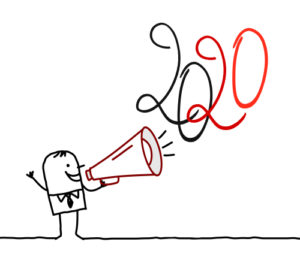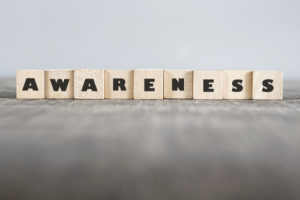by Beth Levine | May 23, 2021 | preparing for a presentation, public speaking
 Picture a swinging rope bridge, the kind you might cross while hiking on an exotic vacation. That’s what your um’s and ah’s are. They are simply a suspension bridge connecting your sentences. They are sound bridges.
Picture a swinging rope bridge, the kind you might cross while hiking on an exotic vacation. That’s what your um’s and ah’s are. They are simply a suspension bridge connecting your sentences. They are sound bridges.
Do you find yourself crossing those bridges, either unwillingly or unwittingly? Do you think if you were more conscious of what you were doing and why – likely trying to avoid silence at all costs – you might be able to quell the urge to use a sound bridge?
Clients ask me all the time to help them with um’s and ah’s. I would say that, realistically speaking, 80% of the time it’s not an issue. It’s either so minor, it’s barely noticeable, or it’s not noticeable at all. Only when those pesky sound bridges are distracting to the audience do we even really venture to work on it.
Working on it means two things: 1) the speaker becoming keenly aware of what’s coming out of their mouth; and 2) the speaker disciplining her/himself to be okay with a pause in between sentences.
Pauses are not a big deal. To the audience, a one- or two-second pause goes right over their heads, it doesn’t even register. Yet, I know that to the speaker, it can feel like one or two days.
Here’s the rub, speakers: getting comfortable with a hard stop on the sentence you’re finishing, followed by a hard start on the next sentence is all you need to be aware of and disciplined about. So for the 20% or so of you who find yourselves crossing sound bridges more often than you like, give it a try and see if you can get yourselves comfortable with a quick pause with no sound.
Trust me, it’ll be okay. It’s less scary than crossing one of those swinging rope bridges!
by Beth Levine | Apr 14, 2021 | preparing for a presentation, public speaking
 Have you ever wished your upcoming presentation would just create itself? I think we all have; hence, the almost inevitable procrastination and dread. Developing a presentation can be challenging, time-consuming, and just plain overwhelming. You’re not sure where to begin, how to narrow your focus, or if you’re doing it “right.”
Have you ever wished your upcoming presentation would just create itself? I think we all have; hence, the almost inevitable procrastination and dread. Developing a presentation can be challenging, time-consuming, and just plain overwhelming. You’re not sure where to begin, how to narrow your focus, or if you’re doing it “right.”
Well, your wish has pretty much been granted. SmartMouth’s SpeechBuilder is a free online tool you can use anytime. SpeechBuilder is a fill-in-the-blanks solution for outlining or detailing your presentations. It prompts you to create a presentation that flows well for you and your audience. In the few minutes it takes to complete, you’ll get the peace of mind and confidence that comes with knowing you’re well-prepared.
It’s up to you how thorough or sketchy you want to be when you fill in the blanks. Once you’ve completed the SpeechBuilder form, you have several options: you can email it to yourself or others, you can view it in outline form, and you can duplicate it if you need to adapt it for a different audience or occasion. SpeechBuilder will automatically save your entries so you can come back and reference or edit your speeches and presentations anytime.
Protip: Use SpeechBuilder first, and then create your slide deck second. It won’t create the deck for you, but it will generate the order and priority points for you.
For a pocket presentation pal that’s at your fingertips anytime, try the SmartMouth Public Speaking Toolkit, our mobile app in the iTunes and Google Play stores. Same tool, but with more tips, and in your pocket.
by Beth Levine | Sep 23, 2020 | preparing for a presentation, public speaking
 Let’s for a moment throw away SmartMouth Communications’s aspirational motto, “communication is the currency of success.” Instead, let’s look at what 2020 is teaching us about the more fundamental importance of communication and consider rephrasing it to be “communication is the currency of life.”
Let’s for a moment throw away SmartMouth Communications’s aspirational motto, “communication is the currency of success.” Instead, let’s look at what 2020 is teaching us about the more fundamental importance of communication and consider rephrasing it to be “communication is the currency of life.”
2020 has been quite a year so far (and we still have one more quarter to go!). Due to the unusual confluence of events this year, and under the klieg lights of competing crises, communication as a practice has revealed itself to be more vital and more challenging than ever.
Leaving politics aside, I think we all can agree we’ve seen a surge in the delivery and consumption of communication from multiple angles. There are increasingly more ways in which communication comes to the fore, but in 2020 in particular, there’s also been urgency. Communication is fueling our opinions and actions in an almost exaggerated, but also necessary, way this year.
Let’s take a closer look …
Pandemic. Public health is as much about communication as it is about medicine or science. We are helpless, and potentially in harm’s way, in the face of any outbreak, let alone a global pandemic, which makes communication absolutely essential. At the end of the day, we all make our own decisions and judgment calls about what we as individuals will do to take care of ourselves, but before we can do that, we depend on communication from experts and leaders.
Protests. Protests are, by definition, a way for people and their voices to join together in collective communication. This form of group communication is meant to create impact and to have influence – louder and more powerfully than any one voice can achieve. Whatever we may think of protests in 2020, they have made themselves a prominent element of our society’s soundtrack this year.
Storms and Fires. Public safety, like public health, is as much about communication as it is about containment and rescue efforts. When it comes to natural disasters, communication is a matter of life and death. Public safety officials, leaders, and citizens alike rely on communication to save lives, homes, and businesses. Warnings, advisories, offers of help and shelter are all critical communications.
Campaigns. Campaigns are notorious noisemakers. However, campaigns are an essential way of communicating the choices we have in a democracy. This year, because we face so many dire issues – health, safety, economic, to name just a few – campaign communications are layered on top of and in the midst of constant, competing, and compelling crises across the country. Political leanings aside, I think we all can agree that campaign communications this year are more intense and more attention-grabbing, because they are more co-mingled with day-to-day events/crises than usual.
It’s been one heck of a year so far and, from where I sit, it’s been fascinating. Not only is there a tidal wave of communication coming our way almost all the time, but we have the need and the time to consume it all. It’s a lot to wade through, there’s no doubt, but consider the alternative: without communication, we’d face multiple risks and threats right now without knowing it and without being able to protect ourselves and our families. Perhaps communication actually is the currency of life.

by Beth Levine | Aug 25, 2020 | preparing for a presentation, public speaking
 How many times have you said, when asked about an upcoming presentation, “Gosh, I hope it goes well!”?
How many times have you said, when asked about an upcoming presentation, “Gosh, I hope it goes well!”?
Think about that for a moment. You hope it goes well? What’s the plan that goes with that?
Hope is not a strategy. A plan to deploy your knowledge and skills is a strategy. Let’s break this down in the simplest way possible:
Your knowledge. You have a topic, and you have subject-matter expertise in that topic. That’s great, but still not enough. The next ingredient in planning your presentation is audience-centricity – taking into account your audience’s interests, needs and experience. In other words, you must organize and prepare your topic/expertise in a way that presents compelling points to your audience, and you must choreograph your time taking into account things like work-from-home distractions and screen-fatigue.
Your skills. You’re a decent presenter when you’re face to face with your audience, i.e. in the same room. More than likely, though, you’re going to need to be just as effective delivering virtually. You’ll need energy – more than usual – in your voice and body. Keep your voice energy consistently up and animated. Sit up straight and be forward in your chair. You’ll also need to employ intense eye contact – with the little green light that is the camera on your computer. Speak to the camera so that your audience sees you looking at them. And you’ll need to rehearse all of this because, in so many ways, it’s trickier than presenting face-to-face.
As we near the end of summer, and continue to settle into the new realities of how we do business, this is a good time to refresh our mindset about making effective presentations. To that end, keep in mind: Hope is not a strategy. Preparation is.
by Beth Levine | Jul 23, 2020 | preparing for a presentation, public speaking
 We don’t know what we don’t know.
We don’t know what we don’t know.
Truer words were never spoken for meetings and presentations in which the participants have never met or don’t know each other well. Call it a mindset, a motto, or simply an awareness, but it would be wise to adopt and internalize the words, “we don’t know what we don’t know.”
In response to feedback from readers after my last post, I am continuing to address implicit bias and racism in the conference room. In particular, I want to address microaggressions – what they are, how they make people feel, and how easy they are to commit unless we make every effort to err on the side of sensitivity.
Because the word “aggression” has connotations of asserting strength or power through intention, there may be some misconception about what the term “microaggression” means. An Oxford Dictionary definition describes a microaggression as “a statement, action, or incident regarded as an instance of indirect, subtle, or unintentional discrimination against members of a marginalized group such as a racial or ethnic minority.”
For our purposes here, I want to talk about microaggressions in our communications and use an example of my own offense in this regard. To that end, I need to share feedback I received recently from a woman of color who had attended one of my trainings six months ago:
She asked me if I remembered a certain story I told in which the main character was a young man from Sudan who stood out (in a Starbucks in the middle of Utah) because he was just under 7 feet tall and very dark-skinned. I remembered the story. She said she knew the story had a relevant point but, for the life of her, she couldn’t remember the point or anything else. Her brain was overtaken and paralyzed by my description of him. She said she had no reason to think my intentions were bad or racially motivated. Rather, her experiences in life had conditioned her to freeze in anticipation of the worst. A person of color listening to a white person telling a story that included mention of skin color made her feel singled-out, almost threatened, in the room. This, much to my regret, was a microaggression.
As she and I talked, I realized how little it takes to make people feel othered or even threatened. She admitted that, even while she knew the story and storyteller didn’t have racial motivations, she still froze, bracing for what a lifetime of intended and unintended offenses had prepared her for. For my part, I was contrite, full of regret, remorse, guilt, you name it.
I learned a good lesson, though, which is what I’m sharing today: Especially in rooms where I don’t know people well, and even where I do, I plan to err on the side of sensitivity. I will approach all interactions with heightened sensitivity and awareness. I will look at the faces of the people I’m communicating with and not assume anything. I will refrain from the use of examples that single out race, religion or ethnicity, and strive to tell stories that will resonate with everyone in the room. I will seek to provide context to my examples and storytelling in a way that could apply universally to anyone in the room. I think we all can do that.
After all, we don’t know what we don’t know.
 Picture a swinging rope bridge, the kind you might cross while hiking on an exotic vacation. That’s what your um’s and ah’s are. They are simply a suspension bridge connecting your sentences. They are sound bridges.
Picture a swinging rope bridge, the kind you might cross while hiking on an exotic vacation. That’s what your um’s and ah’s are. They are simply a suspension bridge connecting your sentences. They are sound bridges.
 Have you ever wished your upcoming presentation would just create itself? I think we all have; hence, the almost inevitable procrastination and dread. Developing a presentation can be challenging, time-consuming, and just plain overwhelming. You’re not sure where to begin, how to narrow your focus, or if you’re doing it “right.”
Have you ever wished your upcoming presentation would just create itself? I think we all have; hence, the almost inevitable procrastination and dread. Developing a presentation can be challenging, time-consuming, and just plain overwhelming. You’re not sure where to begin, how to narrow your focus, or if you’re doing it “right.” Let’s for a moment throw away SmartMouth Communications’s aspirational motto, “communication is the currency of success.” Instead, let’s look at what 2020 is teaching us about the more fundamental importance of communication and consider rephrasing it to be “communication is the currency of life.”
Let’s for a moment throw away SmartMouth Communications’s aspirational motto, “communication is the currency of success.” Instead, let’s look at what 2020 is teaching us about the more fundamental importance of communication and consider rephrasing it to be “communication is the currency of life.”
 How many times have you said, when asked about an upcoming presentation, “Gosh, I hope it goes well!”?
How many times have you said, when asked about an upcoming presentation, “Gosh, I hope it goes well!”?  We don’t know what we don’t know.
We don’t know what we don’t know.

